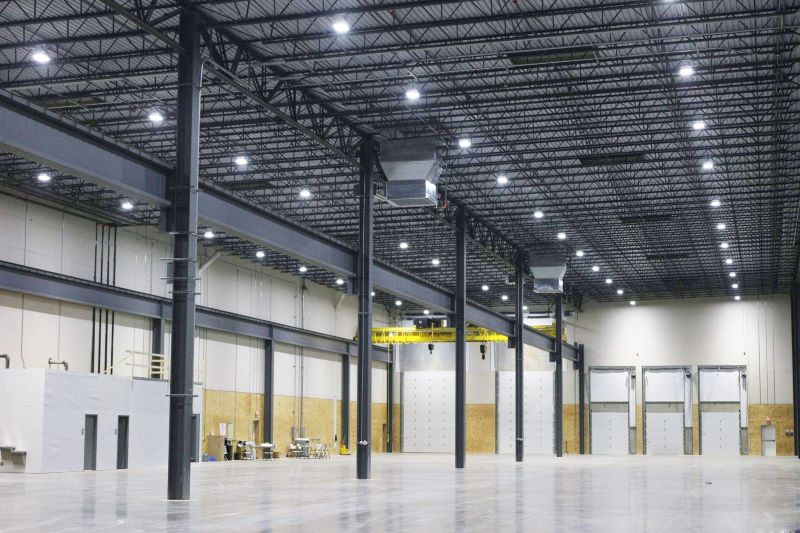High bay and low bay LED lights are both popular choices for illuminating large spaces, but they have some key differences that make them suitable for different applications. Here's a breakdown:
High Bay LED Lights
Ceiling height: Designed for ceilings 20 feet and above, typically found in warehouses, factories, gymnasiums, and aircraft hangars.
Brightness: High lumen output ranging from 10,000 to 100,000 lumens to illuminate large areas with high ceilings.
Beam angle: Narrow beam angle of 40-60 degrees to focus light downwards and minimize glare.
Applications: Warehouses, factories, gymnasiums, aircraft hangars, large retail spaces, and other high-ceiling environments.

High Bay LED Warehouse Lights
High bay led warehouse lights are a common choice for lighting large warehouse spaces. They have the advantages of high brightness, low power consumption and long life, which can help enterprises save energy costs and improve work efficiency.
High Bay LED Warehouse Lights Case
A large retailer installed high bay led warehouse lights in its warehouse. The company found that the new lamps used 60 percent less energy than traditional fluorescent lamps and improved lighting quality. This enables companies to reduce operating costs and improve employee working conditions.
Low Bay LED Lights
Ceiling height: Ideal for ceilings between 8 and 20 feet, commonly seen in shops, showrooms, supermarkets, and car dealerships.
Brightness: Lower lumen output ranging from 4,000 to 8,000 lumens to provide adequate light for lower ceilings.
Beam angle: Wider beam angle of 90-120 degrees to disperse light evenly across a wider area.
Applications: Shops, showrooms, supermarkets, car dealerships, offices, classrooms, and other low-ceiling environments.
LED Low Bay Shop Lights
LED low bay shop lights are a common choice for lighting store spaces. They have the advantages of high brightness, low power consumption and long life, which can help enterprises save energy costs and improve work efficiency.
LED Low Bay Shop Lights Case
A retailer installed LED low bay shop lights in its store. The company found that the new lights' low-glare properties helped improve customers' shopping experience. Additionally, the durability of LED lights means companies need to maintain less fixtures, increasing operational efficiency.
The Key Differences
| Feature | High Bay LED Lights | Low Bay LED Lights |
| Ceiling Height | 20 feet and above | 8 to 20 feet |
| Brightness | 10,000 to 100,000 lumens | 4,000 to 8,000 lumens |
| Beam Angle | 40-60 degrees | 90-120 degrees |
| Applications | Warehouses, factories, gymnasiums, aircraft hangars | Shops, showrooms, supermarkets, car dealerships |
Choosing the Right LED Light
Ceiling height: Choose high bay luminaires for high ceilings and low bay luminaires for lower ceilings.
Required brightness: Consider the size of the room and the desired level of illumination when choosing lumen output.
Beam angle: Narrow beam angles are suitable for focused lighting, while wider angles are ideal for uniform illumination.
Budget: High-bay luminaires are generally more expensive than low-bay luminaires.
Understanding the differences between high bay and low bay LED luminaires will help you choose the best option for your specific needs.
